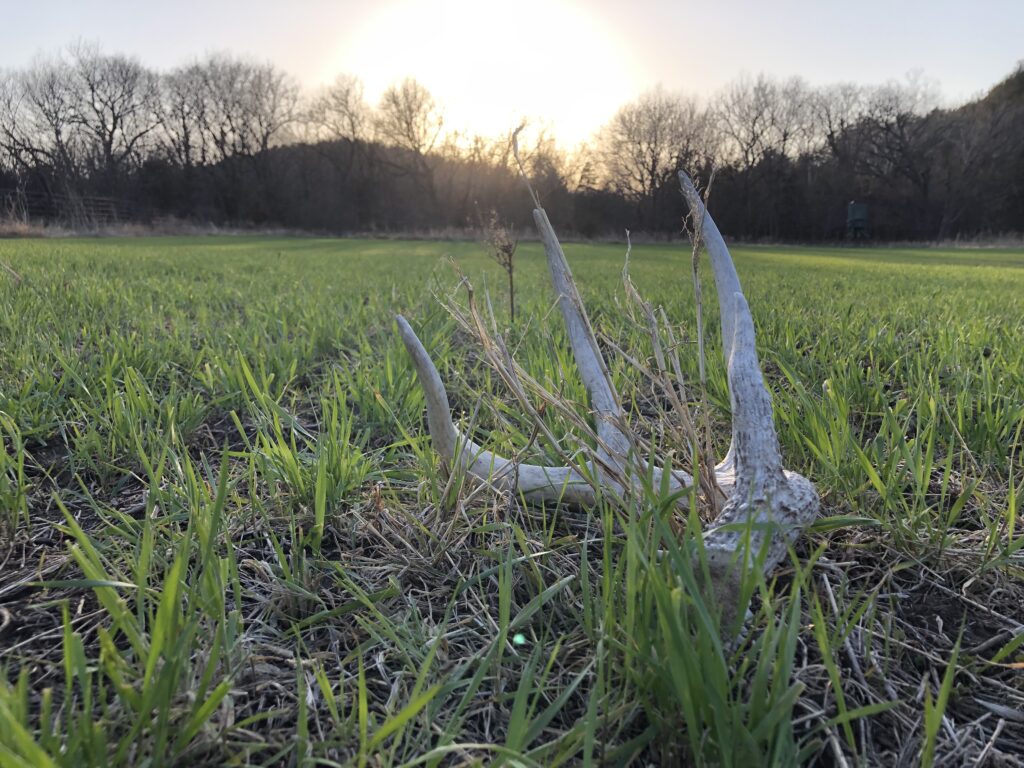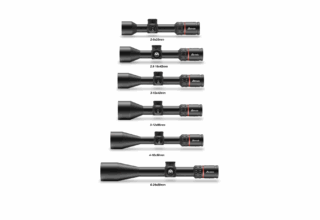Mark Kayser wonders about the woods and mountains every spring, searching for cast bone. He is a master of the practice, and if you want to win at the shed antler hunting game, follow Kayser’s to-come playbook to the letter.
by Mark Kayser
With a relatively open winter upon most of you and spring staring you squarely in the face, shed antlers come to the forefront of activities to cure cabin fever until turkey season. Although you tell yourself that a hike through the woods is good for your health and soul, be honest. You want to win this game. Winning in the shed antler game equals a pile of antlers or unearthing that target buck’s dropped antlers to avenge his fall evasiveness.
I tell myself that being out is reason enough to shed hunt, but the minute I break the barrier into shed country, my inner Patrick Mahomes’ competitive nature cuts loose. Some days, I must give myself a stern command to shut down and make it home at a reasonable time. If you feel the shed antler competitor is growing in you, consider these factors and win the shed antler hunting game.
Time It For The Win
Ungulates, the animal order of hoofed creatures that all deer belong to, shed their antlers at various times of the winter. Moose kick it off early with some bulls dropping in December. Whitetails quickly follow. Some mule deer begin dropping in February, with most in March. Elk take their sweet time, starting in late March and going into April as their antler casting schedule of preference.

Why the biology lesson? Timing is everything when it comes to getting the most from your shed antler excursions. Understanding when your target animal will drop gives insight into whether you should hold off or immediately go after the bone gold.
In some locales, you may have to hit the breaks. State regulations may sideline you until a specific date. This is common out West.
Or, if the deer in your target area are suffering from an extreme winter, hold off to avoid adding additional stress to animals on the verge of mere survival. Elk and deer are at their weakest during this period. They are susceptible to death by added strain.
Since most of you chase whitetail antler dreams, the antlers are now hitting the ground in the highest numbers. Whitetails begin dropping antlers soon after the first of the year, Although most drop in February and March across most of the country’s whitetail zones. As a note, most mature bucks tend to drop first due to expending more testosterone in the rut. And as noted above, a stressful winter could also lead them to drop early. Some of you may have the luxury of going every weekend with shed hunting close by. However, if you are planning a multi-day trip, study the regulations and watch the calendar for the winning day to play.

Harmonize Your Hunt
After deciding on a timeframe and location, hunt the area like a winning quarterback hunts the field for an open receiver. After decades of shed antler hunting, I abandoned my style of hiking aimlessly like a drone operating with a damaged GPS system. If I am familiar with the area, I spend the most time in a place where I have been productive in the past. In new areas, I surmise, from experience, where to start. Then in both cases, I begin hiking in a grid system that covers these locations.
Grid areas of high potential, including food sources, bedding cover, and the trails sporting the highest use between. You can use a solid hunting app, like HuntStand, to help you in this effort. Drop map objects on your turnaround location and work in the opposite direction until you run out of suitable terrain. Drop another and start a new grid. I even pick up skulls or bones in the woods to hang on branches for an easy visual of my gridding efforts. This helps immensely for quick visual confirmation when in dense cover. In more open environments, the hunting app boosts my course plotting.

While shed antler hunting big cottonwood bottoms characterized by dense willow thickets, it is easy to get disorientated and overlap your previous tracks. You do not want to waste time looking in previously trudged ground. On more than one hike gridding through dense willows, I picked up a dozen or more shed whitetail antlers.
Your hunting app also helps you if backcountry is your game. Finding trails down steep canyons to investigate for mule deer or elk shed antlers can become easily lost after a few hours of shed hunting. Dropping a marker at the locations where to clamor back up and out of nasty chasms saves time and the need to backtrack. Drop those marks because when your body is out of gas late in the day, there is no time to consider a long rerouting to exit the country.
An Extra Set Of Eyes
I can end this segment now with the advice to always pack along your binoculars, maybe even your spotting scope if the setting suggests the added power boost. I won’t, though. Over the years, my mind passes on instructions to my eyes to continually scan for the gleaming point of an antler. Ask any of my hunting partners. I call “dibs” on antlers when hiking 365 days a year. Even with the scrutiny of the Six Million Dollar Man’s eyes (approximately $42,000,000 today), I still rely on a binocular 100 percent of the time to take apart the country while searching for shed antlers exhaustively.

Despite an antler’s unique definition, it can blend in with the environment. Tree limbs, leaves, brush, and the like can camouflage an antler, making it nearly impossible to spot from near or far. In the whitetail woods, I continually stop and scan around to look for clues about antlers buried in the forest duff. The optical advantage helps determine if a white outline is a weathered limb or an antler tip. Plus, I save calories and boot leather by scanning across creeks or down into coulees.
The same goes for vast, Western landscapes. A binocular gives me eagle eyesight to scan across canyons or into chasms for antler evidence. One morning, I felt a bit under the weather, When I looked at the nearly vertical 1,500-foot chasm I had to descend to find antlers, I made the commonsense decision to opt out and just glass from the rim. Scanning across the canyon to south-facing slopes more than a half mile away, I spotted three big elk sheds. Two weeks later, when I returned, I dropped in and picked up those three, plus two more. Binocular for the win!
I am partial to the 10×42 and put my Sig Sauer ZULU10 HDX into play every trip, deer or elk antler hunting. The 10 power gives you ample field of view to scan, but more importantly, the high power also defines antler finds from frauds, even from afar.
Work to high ground and glass down to get the most out of a binocular partner. Western topography offers ample high locations, but even in the Midwest, you can find irrigation dikes, farm machinery, or hay bales to give you a vantage point when spotting with a binocular. Without question, a binocular doubles nearly every antler hunting trip I take regardless of the corner of America I am hunting.

Animal Aid
Everyone has heard of using a specialized dog for shed antler hunting, but why not take your garden-variety dog for a walk in the antler woods? Forget the Shih Tzu, but bring them along if you have a hunting, herding, or rescue dog that loves long walks. A dog’s nose is 100,000 times more sensitive than yours, and the dog brain section that analyzes scent is seven times larger than yours. Combine that with your dog always sniffing for something to eat, chew, or roll in, and you employ an instant antler-hunting partner who does not want to talk politics.

Before you release the hound, make sure your canine partner does not run off, does not chase deer, and does listen to commands. Consider a long leash or training collar for eager canines, but it is best to let them roam in sight. I am on my second border collie, and although they do not top the list for shed antler-hunting dogs, border collies are extremely intelligent. I use them for companionship, coyote hunting, antler hunting, horse herding, and more. They do not always retrieve an antler, but I continually watch my current border collie, Sully, out of the corner of my eye. He often stops to dig up an antler or sniff a carcass that may be sporting headgear.
Some of you may have been suckered into the equestrian world by an insistent spouse or kids in the 4-H lifestyle. Use those animals for shed antler hunting when they are not standing around piling up chores for you. Horses or mules offer an efficient way to grid while saving calories. You can use them to access areas too rugged for hiking, and some landowners do not appreciate ATV ruts across fields but ignore horse tracks as they blend with cattle tracks.

A horse also sets you five or more feet higher to peer into tall grass, behind logs, and into deep recesses. That equals a win for more antlers. When my kids were young, we regularly planned shed hunting weekends utilizing the horses. They considered it an adventure without having to hike miles behind dad.
Every so often, I spend a day without an antler find, but by utilizing these elements and mileage on my boots, my antler wins far outnumber days without bone.















